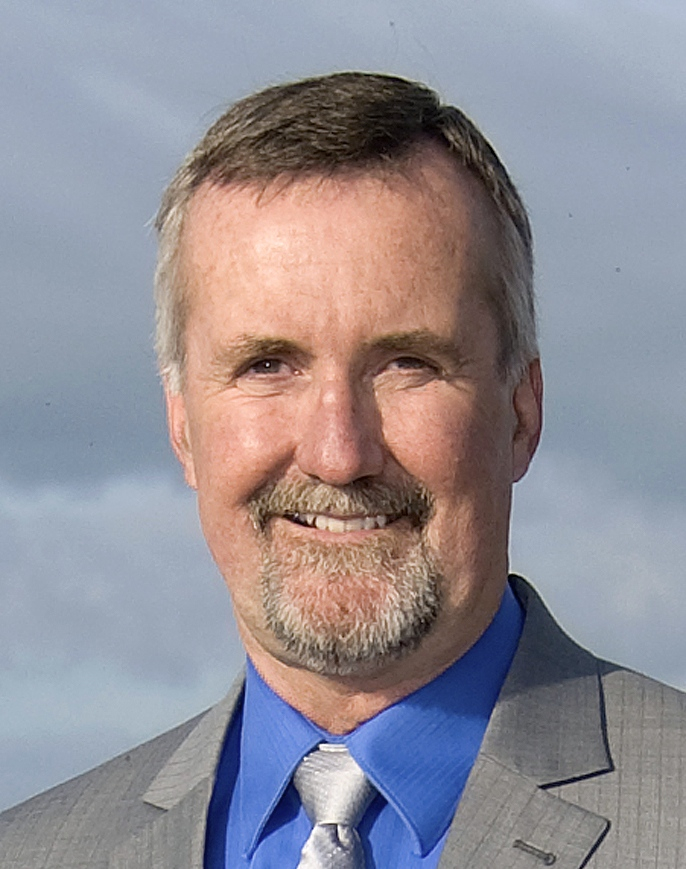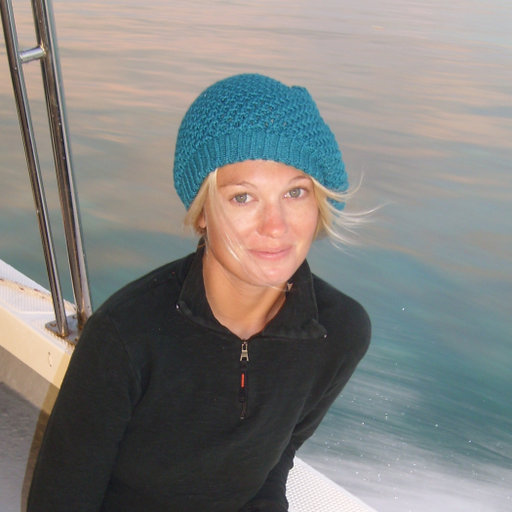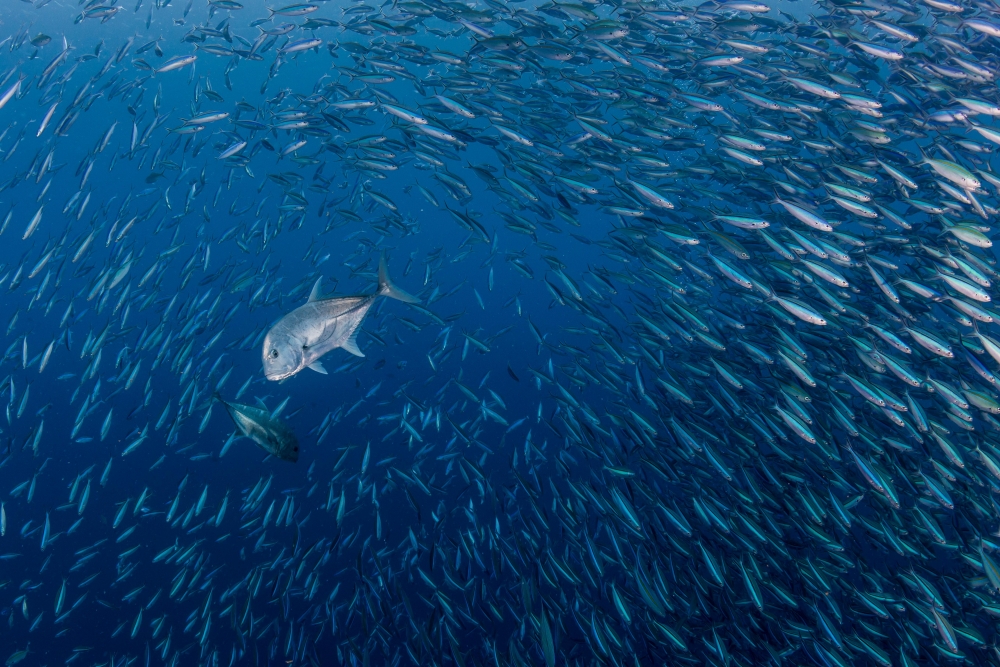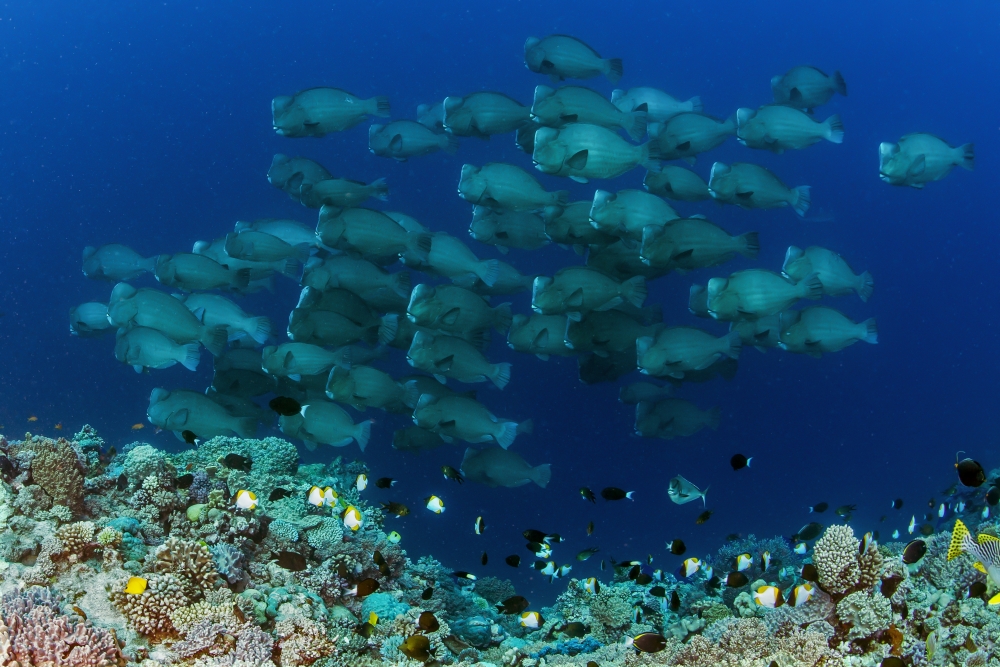Fish Banks

Society will require more food in the coming years to feed a growing population, and seafood will likely make up a significant portion of it. At the same time, we need to conserve natural habitats to ensure the health of our oceans. It seems like a conflict is inevitable.
“Marine protected areas are tools commonly used to conserve marine biodiversity by closing parts of the ocean to fishing,” said Reniel Cabral, an assistant researcher at UC Santa Barbara’s Environmental Market Solutions Lab. “This creates a potential dilemma when closures cause fishers to lose access to fishing grounds.”
A new study indicates that this need not be the case. The paper outlines where the benefits of fishing restrictions could enable a fishery to become more productive, even with the closures. The research, published in the Proceedings of the National Academy of Sciences, lays the groundwork for expanding marine conservation alongside fishery catches.
The benefits of a well-considered marine protected area (MPA) can bolster the productivity of surrounding fisheries, especially when those fisheries are overexploited. The refuge enables populations to rebuild and then spill over into surrounding waters. Protecting an area from fishing also enables resident fish to grow older and larger, and scientists have found that these fish are proportionately more fertile than their smaller counterparts.
What’s more, fishing is not well regulated in many regions. The activity can be decentralized and target many different species using a variety of methods. Managing the industry can be nearly impossible, especially for agencies that are underfunded and underpowered. In this context, designating an MPA is relatively simple, especially compared to other management strategies.
“Past studies have shown that MPAs can improve catch when designed well and under the right fishery conditions,” said Cabral, the study’s lead author. “We asked how you could design a network of marine protected areas to improve fishery productivity, and what the results would be.”
Cabral and his colleagues at UC Santa Barbara, the Hawaiʻi Institute of Marine Biology, and the National Geographic Society began constructing a model of global fisheries that would account for both biologic and economic factors. They leveraged a database of 4,000 fishery stocks, their ecological characteristics, management status and global distributions in combination with a wealth of information on fisheries catch and fisher behavior in response to marine protected areas.
The resulting bio-economic model forecasts how fish populations would respond to the creation of new MPAs based on a variety of factors such as the location and status of fisheries and species mobility and growth rates. This enabled the team to project harvest outcomes over a variety of different reserve designs. The researchers could then see where MPAs would be most beneficial.

Steve Gaines
“We found that there are a lot of places where you can get food benefits,” said coauthor Steve Gaines, dean of UCSB’s Bren School of Environmental Science & Management. “So, rather than having this traditional battle between fisheries and conservation, we can now identify the strategic places where we can potentially get both conservation and fishery benefits.”
Currently, only 2.5% of the ocean is covered by highly protected MPAs. The study found that strategically protecting an additional 5% of the ocean could increase future catch by 20%, or 9 to 12 million metric tons of fish.
The most promising locations tended to cluster around the South Pacific, southeast Africa and the temperate coasts of North and South America. These are regions where well-placed MPAs have the greatest potential for increasing local catch, whether due to the ecology of the stocks, poor fishery regulation or a combination of the two.
The results offer a rubric for determining what the best strategies will be and what regions will yield the best return. It’s a gestalt look at the interplay between marine protected areas and fisheries that can be further developed in the future.
The projections also come only from stocks that scientists have data on. There are plenty of species that don’t have enough data for analysis, and they’re likely to be in far worse shape than those we do have a tab on, Gaines explained. For these reasons, the team believes the benefits to fisheries would likely exceed the predictions in their paper.
The model’s strength lies in its ability to highlight areas where a marine reserve could have high potential benefits for fishing. “Our model can identify areas where MPAs would really improve fishery productivity,” said Cabral, “but designing those at the local level will need to be site specific.”
In addition to being a relatively simple management tool, marine protected areas can provide a great starting point for getting communities involved in fishery management and encouraging ocean stewardship. “MPAs can encourage community participation, which increases the attention they pay to improving their management for fisheries that are not protected,” Cabral said.
Of course, to have this effect, governments need to actively include communities in the planning process. When done well, these stakeholders become active participants in shaping the future of their own resources.
The Environmental Market Solutions Lab is currently applying this model at the country level as well. The results will establish a framework for individual nations to understand the potential benefits of their own marine protected areas.
The team has also taken an active role in applying its research to real-world MPAs. “We are working with multiple countries around the world to support their efforts to place hundreds of thousands of square kilometers of ocean area under protection,” said Darcy Bradley, one of the paper’s coauthors and the co-director of the lab’s Ocean and Fisheries Program.

Darcy Bradley
The group helps with spatial prioritization — leveraging studies like this one — as part of the planning process. They also collaborate with national agencies to design fishery monitoring programs and perform fishery assessments. “In each of these engagements, our goal is to take the best available MPA science and translate it into practical outputs to support thriving ocean ecosystems and economies,” she said.





